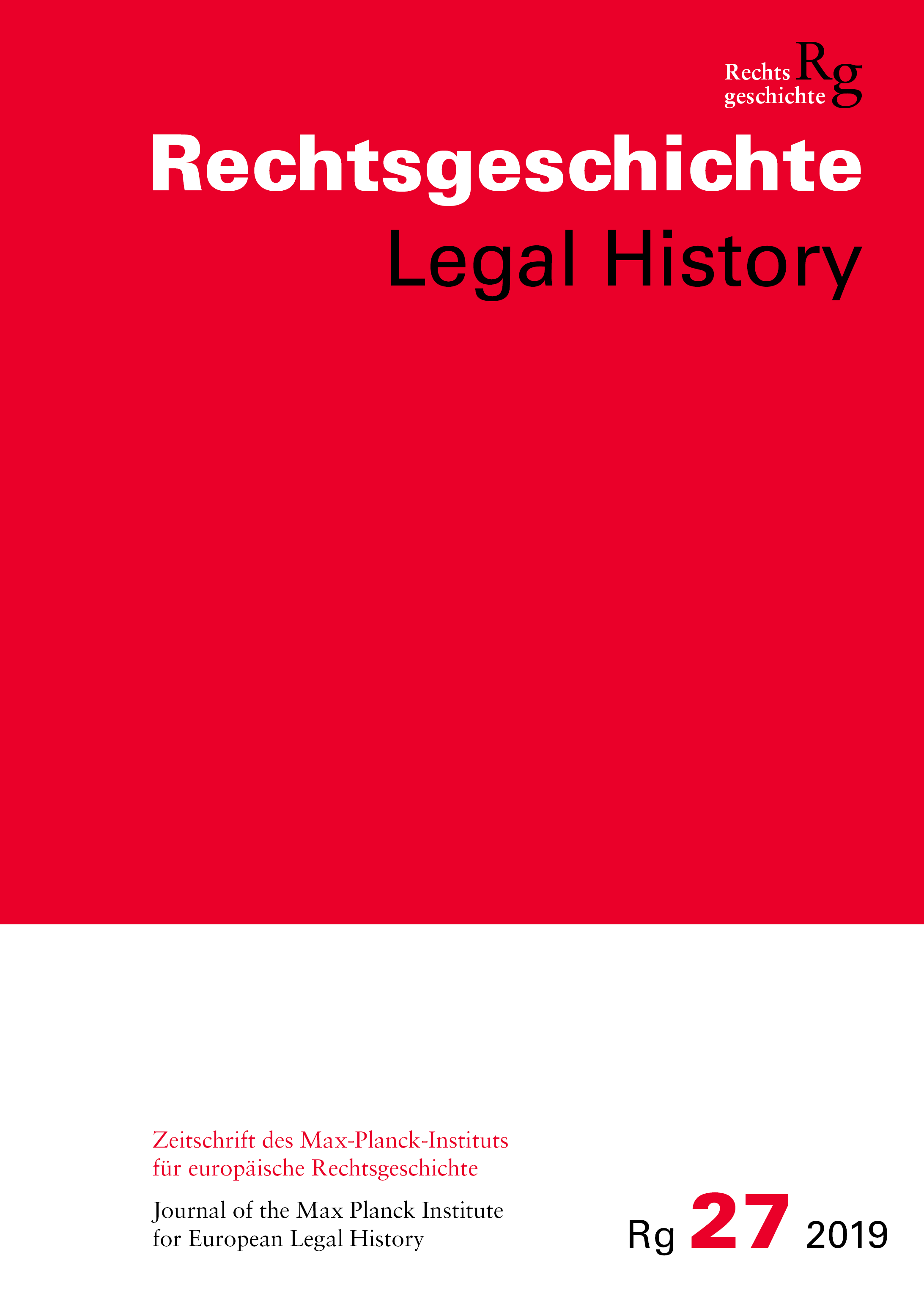If we assume that legal history is an immense communicative event between members of diverse epistemic communities, then it follows that one of the most important tasks of legal historical scholarship is finding out who the participants in this discussion are and determining the connections between the various communicative spheres. An indispensable foundation for such a task, however, is comprised by the unspectacular, tedious, prosopographical works like the ones intensively pursued by various countries since the 1980s. In his contribution, António Manuel Hespanha summarises the results of such studies about Portuguese jurists of the early modern period. This work began in close cooperation with corresponding projects at the Max Planck Institute, and together with his students, he continued pursuing it over the course of the last three decades. These studies offer insights into everyday university life, into the social-historical perspectives on the study of law and canon law, not to mention into the origins, training and career of the letrados. In this respect, they are also an important part of the history of law of the Iberian empires that extends far beyond the bounds of Europe. Such works bring together social- and media-historical perspectives with a history of juridical literature and knowledge; they blend the study of sources and diligence with an awareness of method and intellectuality – combinations typical of António Manuel Hespanha’s work. It was important to him that this summary appear in the Rg, just as he over the past few months has summarised and published many other works. He even witnessed the great success of his most recent book »Filhos da Terra«. Identidades mestiças nos confins da expansão portuguesa, which was released at the beginning of 2019 in Lisbon. It was supposed to be, as is this article, one of his last publications. António Manuel Hespanha passed away on 1 July 2019. For many decades, he was an important dialogue partner, as the publications connected with joint research initiatives show, and we will miss him and his wealth of knowledge.
In the second contribution in the Research section, Jean-Louis Halpérin draws our attention to what, at first glance, seems to be a surprising constellation: the connection between criminal law and the law of nations as academic disciplines – long before the advent of international criminal law. In this skilful mapping of the history of both disciplines within the academic context of German-speaking universities between the 16th and early part of the 20th centuries, he shows just how significant this contingent combination of scientific interests has been. Halpérin’s contribution also uncovers a piece of European legal history that has not remained bound to Europe.
Then we have two special Foci. The first, edited and introduced by Benedetta Albani, is dedicated to Tridentine marriage law in a global-historical perspective. From various observation points – in Europe, Latin America, Asia – the effects and implications of the marriage law reform enacted by the Council of Trent in a variety of different regions is sketched out. The second Focus also deals with the different readings of a highly influential worldwide regulation: the Weimar Constitution. We have taken the much discussed centenary celebration of this document as an opportunity to ask about its translations into other spaces and times. Views from the common law world, Latin America and Asia convey a vivid image of the very different treatment of parts of the Weimar Constitution. It was not least such glocalisations that took place in the early modern and modern periods, mediated by means of a variety of actors at the local, mid- or highest levels, that enabled the emergence of communication communities extending far beyond national and continental borders and who understood each other – even if they did not speak the same language.
In the Forum, we take a closer look at two Oxford Handbooks on legal history published in 2018: The Oxford Handbook of European Legal History and The Oxford Handbook of Legal History. Researchers here at the Institute have selected individual chapters or topics from either one or both handbooks. Several of these observations are summarised in Stefan Vogenauer’s introduction.
While both Handbooks reflect a tendency toward the Anglo-Americanisation also of our discipline, we continue our efforts in the book review section to practice multilingualism and to enable the transfer of knowledge across linguistic, regional and historical boundaries. We are quite pleased that it was possible to compile book reviews on | legal-historical studies treating antiquity, the Middle Ages, the modern era and even contemporary history. One focus is comprised of those areas that are also the subject of intense research here at the Institute: the School of Salamanca and topics closely related to it such as probabilism; the legal history of the Iberian empires and their American, African and Asian parts; the legal history in the common law world; the respective histories of criminal law, legal scholarship and administration. More than a few of the reviews are dedicated to newly published works in the field of medieval legal history, and several more on the history of international law.
More recent research on the Imperial Chamber Court, which we also report on in several book reviews, has been intensively dealing with maps as a means opening up spaces. Closing out this issue, Anette Baumann’s contribution introduces us to select examples of such Augenscheinkarten (inspection maps), and the series of images adorning the print version of Rg are drawn from her work.
As always, our gratitude goes out to all of the authors for their work and cooperation. We dedicate this issue to the memory of António Manuel Hespanha.



